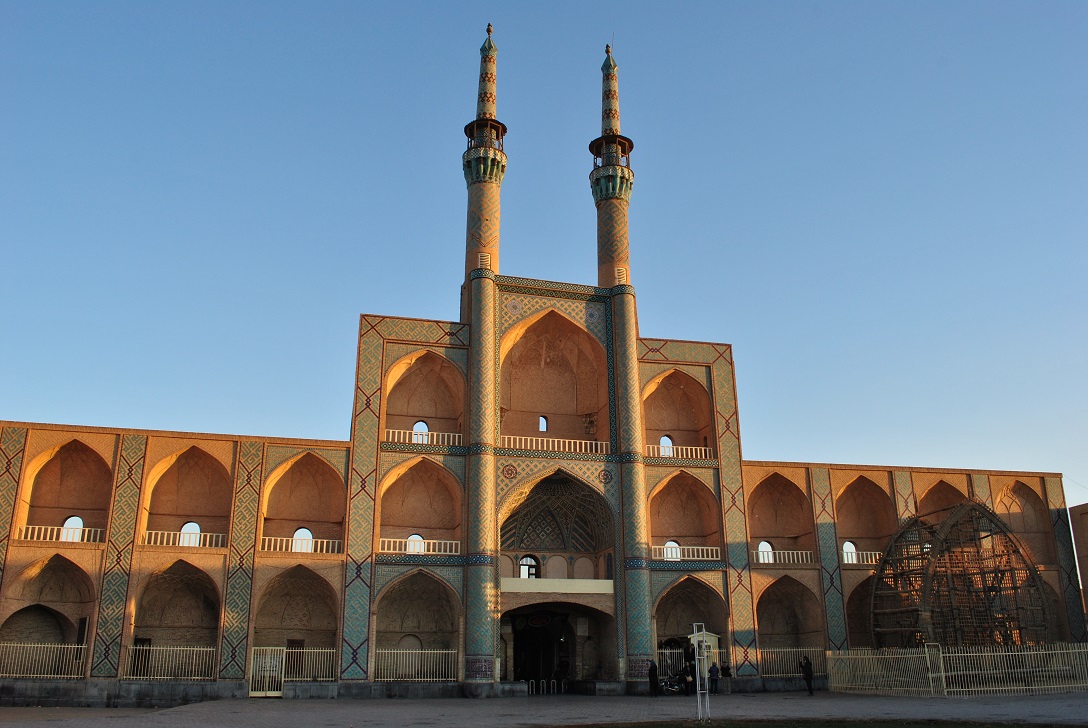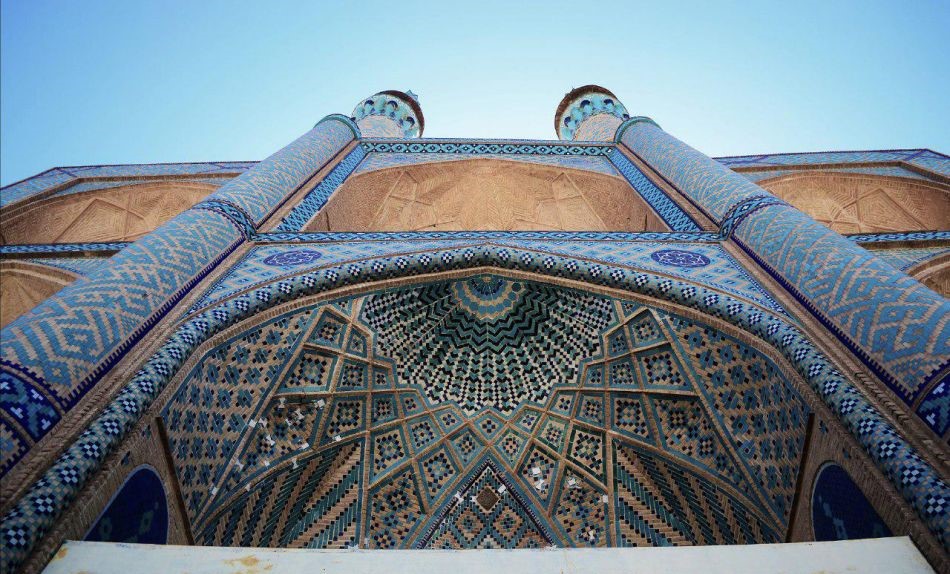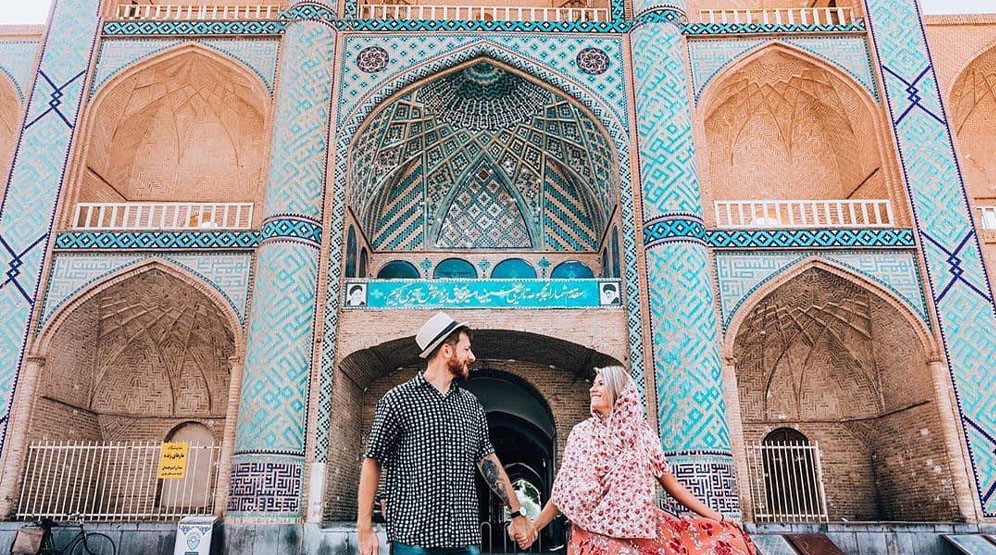Amir Chakhmaq Complex is one of the amazing historical sites of Yazd and its importance in Iran’s tourism is undeniable. The complex was built in the 15th century, during the Timurids’ reign of Iran. Stay with us to find out everything you need to know about this complex.
Yazd City
Yazd is a city located near the desert. As such, the city best represents the genius methods used by human beings for sustaining life in the desert. You can see mudbrick houses, covered passageways, hammams (traditional bathhouses), wind towers, earthen domes and walls everywhere. Here you can also find qanats (underground channels for transporting water) and incredible water cisterns. All these methods have been applied to moderate the temperature and make living in the climate possible. Yazd has also been a center for Zoroastrian Iranians for thousands of years.
History of Amir Chakhmaq
The city of Yazd is home to many squares, mosques, cisterns, etc. But perhaps the most important one is the Amir Chakhmaq Complex. It was built in the 15th century, during the Timurids’ reign of Iran. Amir Jalal al-Din Chakhmaq, the Timurid governor of Yazd at that time, put a lot of efforts to improve the city’s state and help its development. It’s important to note that his wife, Seti Fatemeh Khatun, also had a great role in encouraging and advising these developments.
The governor first established the Amir Chakhmaq Mosque in 1438 (its construction took 20 years). Then he built the square north to the mosque. The subsequent governor of Yazd, Haj Qanbar Jahanshahi, built a caravanserai and bazaar on the square’s two sides.
For a while, before the Pahlavi era, people used to bury their deceased relatives in this square. During the reign of Reza Shah Pahlavi, this was banned and many of the graves were destroyed.
The complex experienced several phases of deterioration and reconstruction. Through the years, different parts such as a water cistern and a Takyeh were added to the complex in the 17th century. However, during the period of Reza Shah’s rule, a considerable part of the square was demolished. This was the period when Shah was modernizing the Iranian cities, and here, the complex was blocking the Pahlavi Street. So, a part of the square’s connection to the bazaar and the caravanserai were destroyed.

Amir Chakhmaq Complex Structure
The complex consists of a mosque with 2 minarets, a caravanserai, a Tekyeh, a traditional bathhouse, and a water cistern. The main building includes three floors. One of the notable features of the building is the repetition of arched alcoves throughout. Some of the arches were added later, in order to add extra support to the centuries-old building. Only the first floor of the building is open to the public.

The Mosque in Amir Chakhmaq
The mosque, also called Dohuk Mosque, is located on the southern side of the square. It was built in the 15th century by the governor of Yazd and is the oldest part of the complex. This is considered as the second beautiful mosque of the city, after Yazd’s Congregation Mosque. The mosque’s dome is decorated with green tiles and manuscripts. The mosque is also adorned with various techniques of Iranian art such as: muqarnas, tiles, arabesque patterns and verses of the Quran.
Water Storage
Even though the square had 3 water cisterns in the past, only one is remaining today. This cistern was built in the 17th century, during the Safavid period, next to the Haji Ghanbal Bazaar. This cistern can be accessed through an entrance in the western angle of the Tekyeh, located in the complex.
The Historical Nakhl
Nakhl is one of the instruments used during the mourning rituals of Ashura by Shia Muslims. The nakhl looks like a cypress tree and is carried as a coffin during a ritual in Muharram, called Nakhl Gardani. This 450-year-old nakhl is considered the oldest in the world. It can be found on the eastern side of the complex.
The Tekyeh of Amir Chakhmaq
A Tekyeh is a place where people can stand and watch religious mourning rituals. The Amir Chakhmaq Tekyeh consists of several rooms. There’s a Tekyeh on the eastern side of the complex. Here you can also find the entrance to the water cistern. This Tekyeh was built almost a century ago, and its 2 minarets were flanked on either side of the bazaar’s entrance.

Haji Ghanbar Bazaar
The Bazaar was built by Haj Qanbar (Ghanbar) Jahanshahi, one of the governors of Yazd. Unfortunately, the bazaar was divided into 2 parts during the Pahlavi period, to allow the passage of a street. As a result, some parts of the bazaar were destroyed. Today, the stores on the northern side of the bazaar are more prosperous than its other parts. You can find fabrics, golden jewelry, carpets, and Yazd’s local sweets in this bazaar.
Seti Fatemeh Khatoon Mausoleum
Seti Fatemeh Khatoon was the wife of Amir Chakhmaq. She died in the 15th century and her mausoleum is located in this complex. On the outside, the dome of the tomb is covered with green tiles. Inside, it is decorated with a muqarnas ceiling and patterned mosaics.
Amir Chakhmaq Address
The complex is a square on Salman-e Farsi Street, Yazd, Iran.
Opening Hours
The complex is in fact a square in the city of Yazd. That’s why you can visit the outside area at any time. However, in order to see the whole place, it is better to visit during the working hours from 8:00 am to 8:00 pm.
Entrance Fee
You don’t need to purchase a ticket, entering the complex is free of charge.



Comment (0)